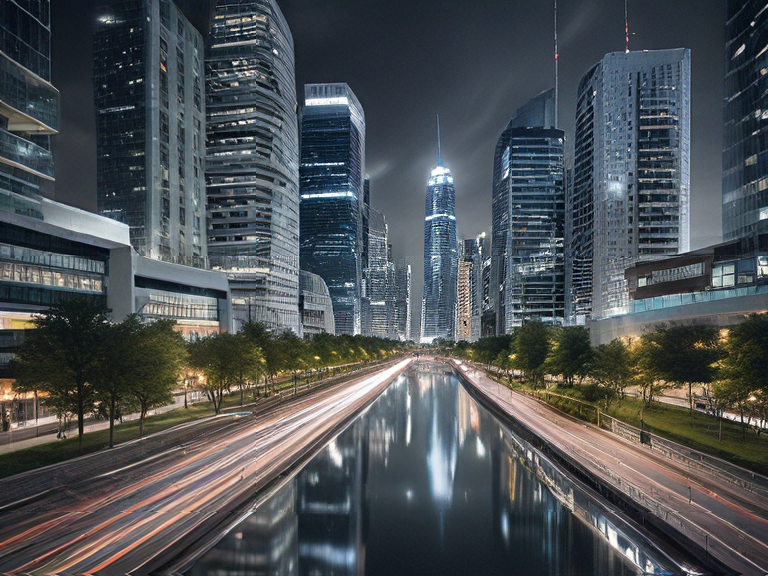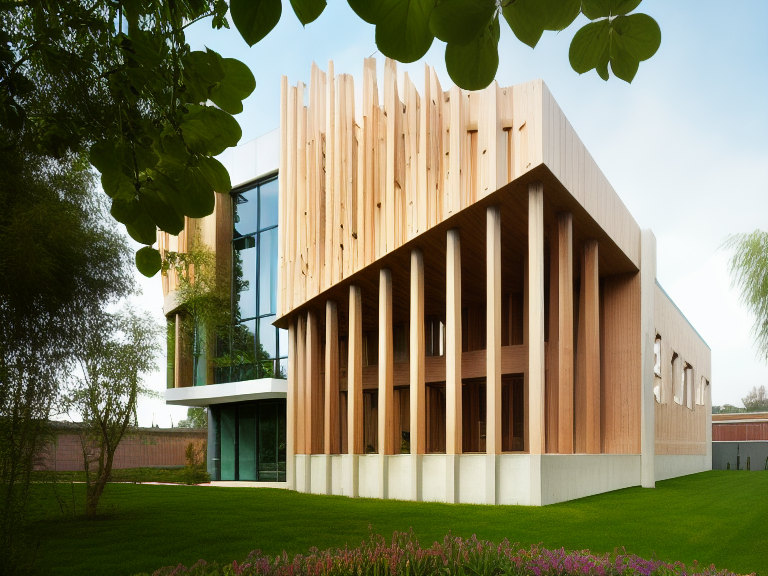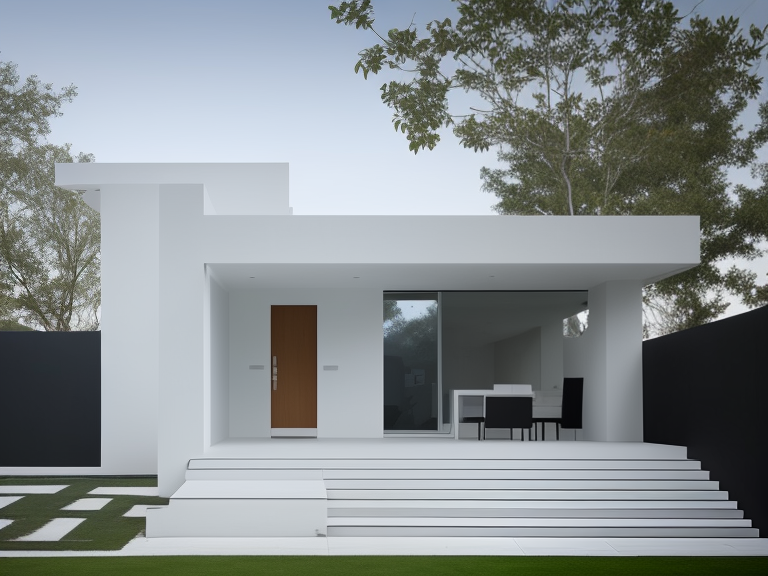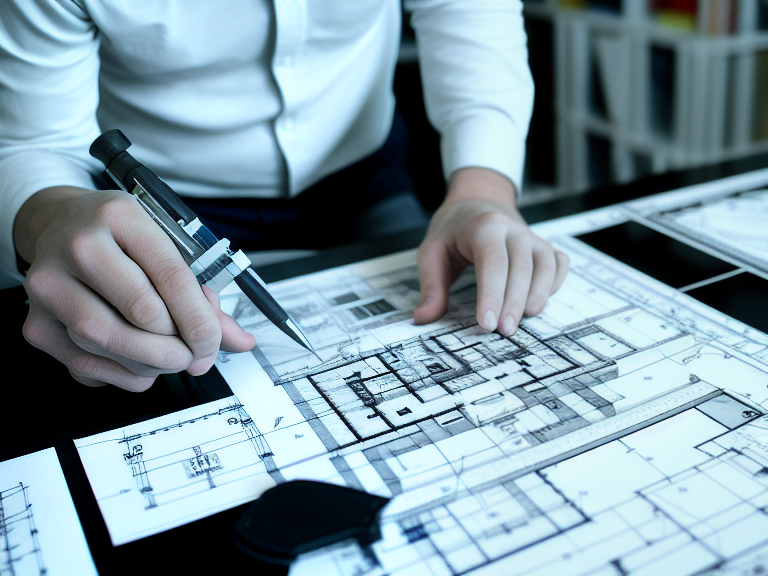Modern cities require innovative solutions to transform urban spaces into sustainable, resilient, and livable environments. Reimagining urban spaces involves revitalizing waterfronts, adaptive reuse of heritage sites, and creating public spaces for community use. Sustainable urban infrastructure includes green roofs and walls, energy harvesting, and sustainable building materials. Smart urban mobility solutions feature smart traffic management, electric vehicle infrastructure, and innovative public transit solutions. Climate resilience and adaptation strategies are essential, along with innovative urban green spaces, such as urban agriculture and vertical forests. As cities continue to evolve, exploring these strategies can reveal a brighter urban future, and there is more to discover.
Revitalizing Urban Waterfronts
Revitalizing Urban Waterfronts
Frequently, urban waterfronts, once thriving hubs of commercial activity, have fallen into disrepair, their industrial heritage and scenic potential languishing beneath a layer of neglect and decay. However, with innovative thinking and creative design, these areas can be transformed into vibrant public spaces that showcase a city's unique character. Revitalizing urban waterfronts presents an opportunity to reimagine the urban landscape, incorporating waterfront aesthetics that prioritize functionality, sustainability, and community engagement.
Urban silos, once barriers to waterfront access, can be repurposed as hubs for innovation and creativity. Adaptive reuse strategies can convert these industrial relics into thriving cultural and entrepreneurial centers, fostering connections between the waterfront and the surrounding city. By integrating green infrastructure, public art, and dynamic programming, revitalized waterfronts can become iconic destinations, boosting local economies and enhancing quality of life for residents and visitors alike.
As cities seek to revitalize their waterfronts, they must prioritize community engagement, inclusive design, and environmental stewardship. By doing so, they can create vibrant public spaces that reflect the unique identity of each city, while also driving economic growth, social cohesion, and environmental sustainability. As urban waterfronts are reborn, they have the potential to become the crown jewels of urban revitalization, inspiring a new wave of urban innovation and creativity.
Green Roofs and Walls Revolution
As cities continue to urbanize, innovative solutions are needed to combat the environmental challenges that arise from dense development. The Green Roofs and Walls Revolution offers a promising approach, tackling two critical issues: mitigating the Urban Heat Island effect and fostering biodiversity in urban ecosystems. By integrating vegetation into building design, cities can reap the benefits of a cooler, more sustainable, and life-rich environment.
Urban Heat Island Mitigation
How can urban planners and architects effectively mitigate the urban heat island effect, which is exacerbating the already sweltering temperatures in cities, through the strategic integration of green roofs and walls? One approach is to incorporate cool pavements, which can reduce the urban heat island effect by up to 4°C. Urban canopies, comprising trees and green roofs, can also provide shade and cool the air through evapotranspiration. This is particularly vital during heat waves, when the urban heat island effect can be deadly.
| Strategy | Description | Impact |
|---|---|---|
| Green Roofs | Plant-covered roofs providing insulation and evapotranspiration | Reduces urban heat island effect by 2-3°C |
| Urban Canopies | Tree-lined streets and green roofs providing shade and cooling | Reduces urban heat island effect by 1-2°C |
| Cool Pavements | Light-colored pavement materials reflecting sunlight and heat | Reduces urban heat island effect by 4°C |
| City Cooling | Integrated urban design incorporating green spaces and cool materials | Reduces urban heat island effect by 5-6°C |
| Green Walls | Vertical gardens providing insulation and cooling | Reduces urban heat island effect by 1-2°C |
Biodiversity in the City
Urban green spaces, already proven to mitigate the urban heat island effect, can also serve as habitats for various plant and animal species, sparking a biodiversity revolution in cities through the strategic integration of green roofs and walls. This innovative approach transforms urban landscapes into thriving ecosystems, supporting a diverse range of urban wildlife. City habitats, once thought to be barren and lifeless, can now become vibrant hotspots of biodiversity, providing essential ecosystem services and enhancing the quality of life for urban residents.
Green roofs and walls, carefully designed to mimic natural habitats, can become refuges for endangered species, while also mitigating the effects of urbanization on local wildlife populations. By incorporating native plant species, urban green spaces can support pollinators, insects, and small animals, fostering a complex web of relationships between species. As cities evolve into thriving ecosystems, they can become models for sustainable development, demonstrating the potential for urban areas to support both human and environmental well-being. By embracing this green revolution, cities can become hubs of biodiversity, where urban wildlife thrives alongside human inhabitants.
Smart Traffic Management Systems
Integrated with advanced sensors and real-time data analytics, smart traffic management systems optimize traffic flow, reducing congestion and travel times in metropolitan areas. These systems leverage cutting-edge technologies to streamline traffic operations, minimizing delays and enhancing the overall commuting experience.
By harnessing the power of data-driven insights, smart traffic management systems can:
- Intelligent Intersections: Optimize traffic signal timing to prioritize traffic flow, decreasing congestion and wait times at intersections.
- Real-time Routing: Provide drivers with dynamic routing recommendations, adjusting to real-time traffic conditions to minimize travel times.
- Predictive Maintenance: Identify potential infrastructure issues before they occur, enabling proactive maintenance and minimizing disruptions to traffic flow.
These innovative solutions can notably reduce traffic congestion, decrease travel times, and improve air quality in urban areas. By embracing smart traffic management systems, cities can create more efficient, sustainable, and livable environments for their citizens. As urban populations continue to grow, the importance of intelligent traffic management will only continue to escalate, making it a critical component of reimagining urban spaces for the modern era.
Energy Harvesting Urban Infrastructure
As cities evolve to accommodate growing populations, can they afford to overlook the vast, untapped energy potential hidden within their own infrastructure? The answer lies in innovative urban design, where energy harvesting infrastructure becomes an integral part of urban planning. One such solution is the integration of Solar Pavements, which convert sunlight into electricity, powering streetlights, traffic signals, and even electric vehicle charging stations. This technology has the potential to transform urban landscapes, generating clean energy while reducing reliance on fossil fuels.
Another groundbreaking concept is the incorporation of Piezoelectric Sidewalks, which harness the kinetic energy generated by pedestrian foot traffic. These sidewalks, embedded with piezoelectric sensors, can power urban amenities such as public Wi-Fi, streetlights, and even urban gardens. This technology not only reduces the urban carbon footprint but also creates a more interactive and engaging urban environment. By integrating these energy-harvesting systems into urban infrastructure, cities can reduce their reliance on traditional energy sources, decrease emissions, and create a more sustainable future. As urban populations continue to grow, it is imperative that cities prioritize innovative energy solutions, reimagining urban spaces to accommodate the needs of a sustainable future.
Sustainable Building Materials Rise
Many architects and builders are now turning to sustainable building materials, recognizing that the construction industry's environmental footprint can be drastically reduced through the strategic selection of eco-friendly alternatives. This shift towards sustainability is driven by the growing awareness of the industry's substantial impact on the environment, with the construction sector accounting for nearly 40% of global energy consumption.
To mitigate this environmental burden, innovative builders are adopting sustainable materials and practices that not only reduce waste but also promote material reuse and building integration. Some notable examples include:
- Recycled concrete aggregates: Created from recycled concrete waste, these aggregates reduce the need for virgin materials and decrease the environmental impact of concrete production.
- Cross-laminated timber (CLT): This engineered wood product offers a sustainable alternative to steel and concrete, with a considerably lower carbon footprint.
- Living walls and roofs: Integrated into building design, these green spaces promote biodiversity, improve air quality, and reduce urban heat island effects.
Urban Agriculture Takes Root
As cities transform, urban agriculture is emerging as an essential component of sustainable urban planning. Innovative approaches to food production are taking hold, with rooftop farming expanding to provide fresh produce to local communities. From vertical growing systems to community garden hubs, these initiatives are redefining the urban landscape and fostering a healthier, more resilient urban environment.
Rooftop Farming Expands
Beyond the concrete jungle, a new wave of urban farmers is cultivating a different kind of landscape, where vacant rooftops are transformed into thriving agricultural oases. Rooftop farming is revolutionizing the way cities approach food production, and it's not just about sustainability – it's about aesthetics too. Urban rooftops, once barren and neglected, are now bursting with life, providing a tranquil escape from the hustle and bustle of city living.
Rooftop farming expands the possibilities for urban agriculture, addressing pressing concerns like food security and urban aesthetics. Here are three key benefits of rooftop farming:
- Increased food production: Rooftop farms can provide fresh produce to local communities, improving food security and reducing reliance on industrial agriculture.
- Urban revitalization: Green roofs and walls can transform urban landscapes, creating oases of calm in densely populated areas and enhancing urban aesthetics.
- Community engagement: Rooftop farms often serve as community hubs, fostering social connections and promoting education on sustainable practices.
As cities continue to evolve, innovative approaches to urban agriculture will be essential in shaping the future of urban living. Rooftop farming is a beacon of hope, demonstrating that even the most unlikely spaces can be transformed into thriving ecosystems.
Vertical Growing Systems
By leveraging vertical space, urban farmers are now cultivating crops in densely populated areas, paving the way for a more efficient and productive form of urban agriculture. This innovative approach to urban farming addresses pressing concerns of food security, as cities can now produce a substantial portion of their own fresh produce. Hydroponic innovations have enabled the development of soilless cultivation methods, such as aeroponic systems, which use markedly less water and land. Vertical harvesting allows for maximum yields in minimal space, making it an ideal solution for densely populated cities. Green canopies, integrated into building design, provide additional growing space while also mitigating the urban heat island effect. Crop diversification is also facilitated through vertical growing systems, enabling the cultivation of a wide variety of fruits, vegetables, and herbs. As the global population becomes increasingly urbanized, vertical growing systems will play a critical role in ensuring food security and sustainability in modern cities.
Community Garden Hubs
More than 80% of urban residents now live within walking distance of a community garden hub, where vacant lots and rooftops are transformed into vibrant agricultural spaces. These hubs not only provide fresh produce to local communities, but also serve as educational centers, fostering a deeper understanding of sustainable food systems. Community garden hubs are instrumental in addressing food insecurity, offering residents access to fresh, locally grown produce, thereby improving overall food access.
These hubs also offer a unique opportunity for garden education, empowering individuals with the skills and knowledge necessary to cultivate their own food. By providing hands-on training and workshops, community garden hubs are cultivating a new generation of urban farmers.
Key benefits of community garden hubs include:
- Increased food access: Fresh produce is made available to local residents, improving overall food security.
- Garden education: Hands-on training and workshops empower individuals with the skills necessary to cultivate their own food.
- Community engagement: Community garden hubs serve as community gathering spaces, fostering social connections and a sense of community.
Public Spaces for Community Use
Urban public spaces, when intentionally designed for community use, can become vibrant hubs of social activity, fostering a sense of community and promoting social cohesion among residents. These shared areas have the potential to bring people together, encourage social interaction, and create a strong sense of belonging. By incorporating innovative design elements and amenities, public spaces can be transformed into thriving community hubs.
One effective approach is Plaza Revitalization, which involves reinvigorating underutilized public spaces to create vibrant gathering areas. This can be achieved by incorporating greenery, seating areas, and street art, making the space more inviting and conducive to social interaction. Additionally, incorporating community-focused amenities such as free Wi-Fi, public art installations, and community bulletin boards can further enhance the space's appeal.
Community Hubs, another innovative approach, involve creating public spaces that serve as central gathering points for community activities, events, and services. These hubs can provide essential services such as food banks, health clinics, and educational resources, while also hosting community events, workshops, and cultural performances. By integrating these innovative design elements and amenities, public spaces can be transformed into thriving community centers, fostering a stronger sense of community and promoting social cohesion among residents.
Electric Vehicle Infrastructure Boom
As cities work towards reducing their carbon footprint, a parallel movement is emerging, driven by the growing demand for sustainable transportation options and the need for thorough electric vehicle infrastructure. The electric vehicle (EV) revolution is gaining momentum, and cities are responding by investing in EV charging infrastructure to support the shift. This change has significant implications for urban planning, as cities must adapt to accommodate the increased demand for EV charging stations.
To support the growing number of EVs on the road, cities are implementing innovative solutions to expand their charging infrastructure. Some key strategies include:
- EV Charging Corridors: Designating specific routes and areas for EV charging stations, ensuring convenient and accessible charging options for drivers.
- Smart Charging Systems: Implementing intelligent charging systems that optimize energy distribution, reducing strain on the grid and minimizing peak demand.
- Grid Capacity Upgrades: Upgrading existing grid infrastructure to accommodate the increased energy demand from EV charging, ensuring a reliable and efficient energy supply.
As cities continue to evolve, the development of EV infrastructure will play a critical role in shaping the urban landscape. By investing in innovative solutions, cities can support the growth of sustainable transportation, reduce carbon emissions, and create a more livable and sustainable urban environment.
Adaptive Reuse of Heritage Sites
As cities evolve, the adaptive reuse of heritage sites has emerged as a crucial strategy for preserving historical integrity while revitalizing urban landmarks. By repurposing historic buildings and sites, cities can breathe new life into underutilized spaces, fostering vibrant community hubs that honor the past while serving the needs of the present. This approach not only conserves cultural heritage but also injects vitality into urban landscapes, creating unique opportunities for economic growth and community engagement.
Preserving Historical Integrity
By repurposing historic buildings, cities can preserve the cultural and architectural heritage of their past while injecting new life into underutilized spaces. This approach not only conserves the historic fabric of a city but also fosters a sense of community and continuity. Through adaptive reuse, cities can breathe new life into abandoned or underutilized heritage sites, making them relevant and vibrant once again. Adaptive reuse in urban design also contributes to environmental sustainability by reducing the need for new construction and minimizing waste. Additionally, it can drive economic growth by attracting businesses, residents, and tourists to revitalized areas. By creatively transforming historic buildings, cities can balance modernization with preservation, ensuring a dynamic and culturally rich urban environment.
To achieve successful historic revitalization, cities should consider the following strategies:
- Sensitive restoration: Preserve the original architectural features and character of the building, making sure that any modifications are subtle and respectful of the original design.
- Functional adaptation: Repurpose the building to serve a new function, such as converting an old factory into a trendy boutique hotel or a vintage theater into a modern performance venue.
- Contextual integration: Make certain that the restored building blends seamlessly into its surroundings, respecting the character of the surrounding neighborhood and urban landscape.
Revitalizing Urban Landmarks
Beyond preserving historic integrity, cities can revitalize urban landmarks by creatively repurposing heritage sites, harnessing their potential to become vibrant community hubs that resonate with residents and visitors alike. This innovative approach not only breathes new life into underutilized spaces but also fosters a sense of cultural revival, reconnecting citizens with their urban legacy. By adapting heritage sites for modern purposes, cities can tap into their rich history while injecting fresh vitality into the urban fabric.
Repurposed landmarks can serve as dynamic cultural centers, hosting art exhibitions, performances, and community events that celebrate the city's heritage. This fusion of old and new creates a unique urban identity, strengthening the bond between citizens and their surroundings. Additionally, revitalized landmarks can stimulate local economies by attracting tourism and entrepreneurship, further enriching the urban landscape. By embracing adaptive reuse, cities can utilize the full potential of their heritage sites, forging a vibrant, inclusive, and culturally rich urban environment that honors the past while embracing the future.
Resilient Cities and Climate Change
In the face of escalating climate-related disasters, cities must rethink their urban planning strategies to prioritize resilience and adaptability. As climate change intensifies, cities are increasingly vulnerable to natural disasters, rising sea levels, and extreme weather events. This vulnerability is exacerbated by urbanization, which concentrates populations and infrastructure, making them more susceptible to climate-related risks.
Climate change is displacing communities, creating climate refugees who are forced to flee their homes due to rising sea levels, drought, or extreme weather events. Cities must be prepared to absorb these climate migrants, providing them with adequate housing, infrastructure, and social services.
To build resilient cities, urban planners must adopt innovative strategies to mitigate the impacts of climate change. These strategies include:
- Flood-resistant construction: designing buildings and infrastructure that can withstand flooding and sea-level rise.
- Green infrastructure: integrating natural systems, such as parks and green roofs, to absorb stormwater runoff and mitigate urban heat islands.
- Climate-resilient transportation: developing transportation systems that can adapt to changing weather patterns, such as flood-resistant roads and elevated pedestrian walkways.
Innovative Public Transit Solutions
As cities adapt to the challenges of climate change, innovative public transit solutions become essential for ensuring the mobility and accessibility of urban populations. Traditional transportation systems are often congested, polluting, and inefficient, making it imperative to rethink urban mobility. Innovative public transit solutions can revolutionize the way people move around cities, reducing emissions and enhancing the overall urban experience.
One promising approach is the development of Mobility Hubs, which integrate multiple transportation modes, such as buses, trains, and bike-sharing systems, into a seamless network. These hubs can be strategically located in high-demand areas, providing citizens with efficient and convenient travel options. Additionally, the integration of Autonomous Fleets can greatly improve public transit efficiency, reducing labor costs and increasing safety.
Autonomous vehicles can optimize routes in real-time, reducing congestion and emissions while providing real-time information to passengers. Furthermore, autonomous fleets can operate around the clock, catering to the diverse needs of urban dwellers. By leveraging data analytics and IoT sensors, cities can monitor and manage traffic flow, ensuring a smoother and more sustainable transportation experience. Innovative public transit solutions like Mobility Hubs and Autonomous Fleets can transform urban mobility, making cities more livable, sustainable, and resilient. By embracing these cutting-edge technologies, cities can create a better future for their citizens.
Vertical Forests and Urban Ecology
Cities are cultivating a new wave of urban ecology by incorporating Vertical Forests, densely planted high-rise buildings that bring forth a symbiosis of nature and architecture. These innovative structures not only provide a unique aesthetic but also contribute markedly to the city's ecosystem. By integrating lush tree canopies into urban landscapes, Vertical Forests enhance air quality, mitigate the urban heat island effect, and create habitats for urban wildlife.
The benefits of Vertical Forests extend beyond aesthetics, with tangible advantages for urban dwellers. Some of the key advantages include:
- Urban Oxygen: Vertical Forests absorb carbon dioxide and release oxygen, contributing to a healthier urban atmosphere.
- Microclimate Regulation: Tree canopies provide shade, reducing the need for air conditioning and mitigating the urban heat island effect.
- Biodiversity Hotspots: Vertical Forests create habitats for urban wildlife, increasing local biodiversity and supporting ecosystem services.
Frequently Asked Questions
Can Urban Planning Prioritize Both Aesthetics and Functionality?
Prioritizing both aesthetics and functionality in urban planning is essential for creating vibrant, people-centric cities. By integrating public art, urban identity is strengthened, fostering a sense of community and cultural revitalization. Through inclusive community engagement, cities can balance form and function, yielding innovative, livable spaces that reflect local character. This harmonious blend of aesthetics and functionality enables cities to thrive, driving economic growth, social cohesion, and environmental sustainability.
How Do Smart Traffic Systems Address Pedestrian Safety Concerns?
"An ounce of prevention is worth a pound of cure." Effective smart traffic systems prioritize pedestrian safety through innovative solutions. Smart Intersections, equipped with advanced sensors and Pedestrian Analytics, detect and respond to potential hazards in real-time, reducing accidents and near-misses. By leveraging data-driven insights, cities can optimize traffic flow, minimize congestion, and create safer, more efficient urban environments that prioritize pedestrian well-being.
Are Green Roofs and Walls Accessible for Low-Income Housing?
Integrating green roofs and walls into low-income housing is often hindered by affordability barriers. However, innovative solutions can overcome these obstacles. Community engagement is key, involving residents in the design process to guarantee that green infrastructure meets their needs and priorities. By leveraging government incentives, public-private partnerships, and cost-sharing models, affordable green roofs and walls can become a reality, improving the health, well-being, and environmental sustainability of low-income communities.
Do Energy-Harvesting Infrastructure Projects Rely on Government Funding?
While government funding can catalyze energy-harvesting infrastructure projects, they don't solely rely on it. For instance, the innovative solar-powered highway in Georgia, USA, was funded through a public-private partnership. Private investments and energy storage solutions can drive project feasibility. In fact, companies like Tesla and Sonnen are pioneering energy storage solutions, reducing reliance on government funding. This synergy between private investments and innovative technology can accelerate the adoption of energy-harvesting infrastructure projects.
Can Urban Agriculture Projects Be Economically Viable Without Subsidies?
Urban agriculture projects can be economically viable without subsidies by adopting innovative business models. Farm-to-Table initiatives, for instance, can generate revenue through direct-to-consumer sales. Implementing Crop Insurance can mitigate market fluctuations, while strategic farm labor management and land leasing agreements can reduce operational costs. By diversifying revenue streams and optimizing operations, urban agriculture projects can achieve financial sustainability, paving the way for a thriving and resilient urban food system.



